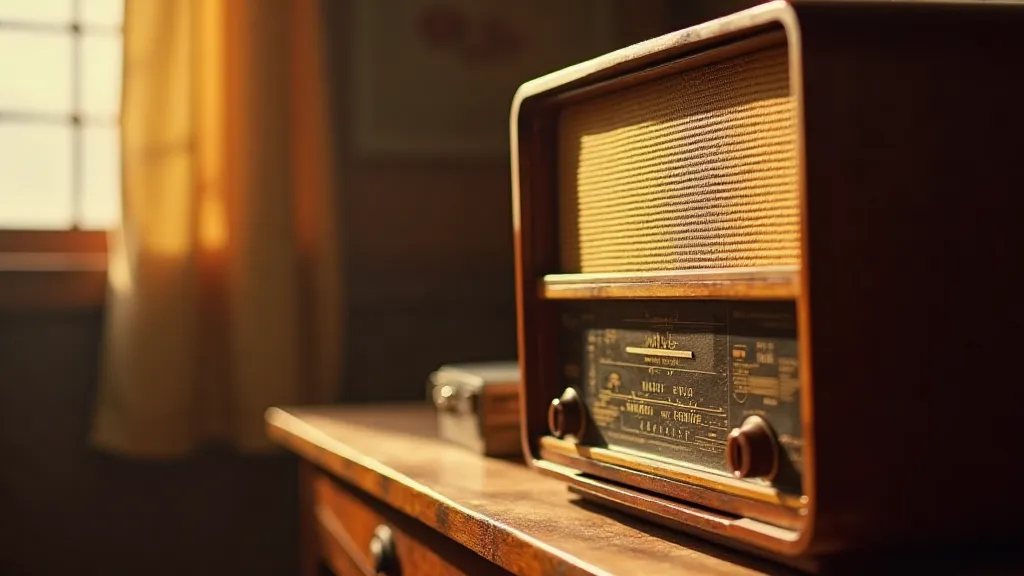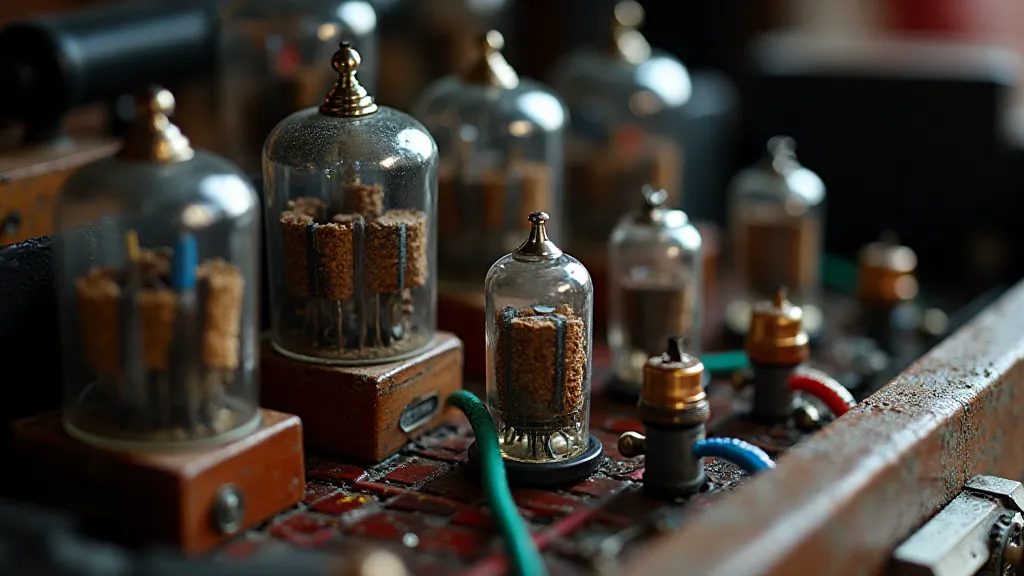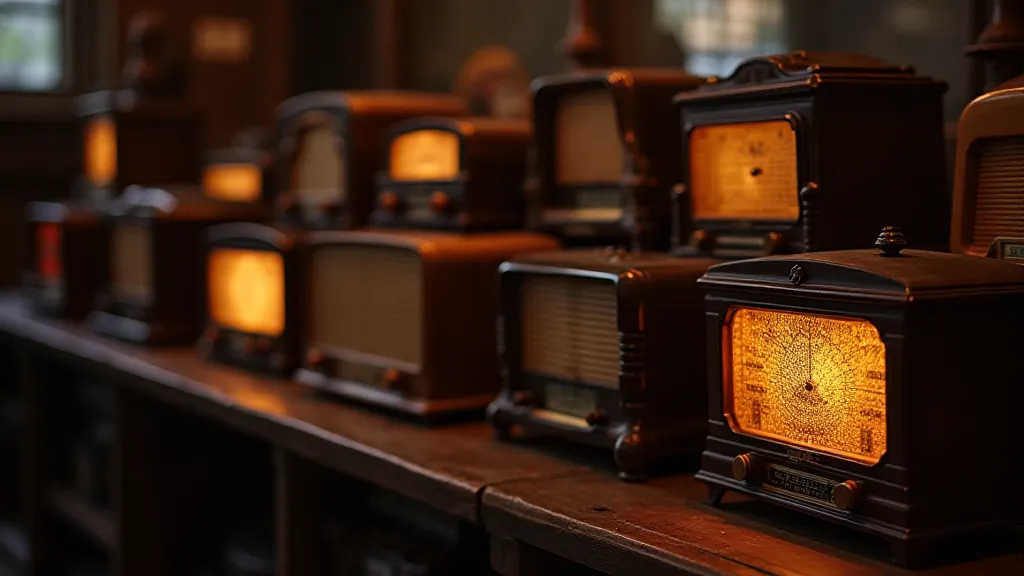Echoes in Amber: Unearthing Stories Within the Silent Valves
There's a profound stillness to an antique radio. It's not simply the absence of sound, but a held breath, a moment suspended in time. As restorers, we often focus on the mechanics – the capacitors, the tubes, the intricate wiring. But what if, within that silence, lies a chorus of voices, a tapestry of forgotten moments? Restoring an antique radio isn’t just about reviving electronics; it's about resurrecting narratives, about listening to the echoes of generations past.
I remember my grandfather’s Zenith Trans-Oceanic. It wasn’s a pristine showpiece; it was loved, used, a familiar presence in his den. The bakelite was scuffed, the speaker cloth faded, and a small chip marred the top panel – evidence of a lifetime of use. Bringing it back to life wasn't about erasing those marks, but understanding them. Each imperfection whispered a story – a careless handling by a young boy, a hurried move across town, perhaps even a shared moment of anxiety during a wartime broadcast.

The Dawn of Domestic Broadcasting & the Rise of the Radio Owner
To truly appreciate these silent storytellers, we need to understand the historical context. The 1920s were transformative. Radio wasn’t just a technological marvel; it was a social revolution. Suddenly, families could gather around a single device and experience shared events – baseball games, political speeches, musical performances – regardless of location. Radio ownership wasn't merely a sign of technological adoption; it signified a burgeoning middle class, a connection to the wider world, and a shared cultural experience unlike anything that had existed before.
Early radio models, often housed in elegant cabinets crafted from oak, walnut, or even cathedral-style architecture, were status symbols. They represented aspirations and a move away from the isolation of rural life. Imagine the excitement of families in the 1930s, listening to the crackling voices reporting on the Dust Bowl or Franklin D. Roosevelt’s fireside chats. These weren’t just broadcasts; they were lifelines, a source of hope and connection during incredibly challenging times.
Deciphering the Clues: Models, Labels & Ephemera
So, how do we begin to unearth these "echoes"? It starts with careful observation. The radio’s model number, the manufacturer’s logo, and any remaining labels are your initial clues. Researching these details provides a window into the radio's era and its original intended audience. A Philco Model 48, for instance, was a popular choice in the late 1930s, often found in middle-class homes across America. The specific trim and speaker arrangement can even hint at regional manufacturing variations.
But the story doesn't end with the radio itself. Often, associated ephemera – original sales brochures, service manuals, even handwritten notes tucked away within the cabinet – can reveal even more. I once found a small, yellowed photograph inside a Stromberg-Carlson radio, depicting a family gathered around it during what appeared to be a Christmas celebration. It was a poignant reminder of the role these machines played in creating family traditions and marking milestones.
Examine the radio’s cabinet. Is it free-standing, or built into a piece of furniture? The style of the cabinet often reflected the prevailing design trends of the era – Art Deco geometry, Streamline Moderne curves, or the more traditional lines of earlier models. The materials used—the quality of the wood, the type of finish—can also provide clues about the radio's original price point and intended market.
The Craftsmanship: A Testament to a Bygone Era
Beyond the historical context, appreciating the craftsmanship itself adds another layer of emotional connection. The level of detail in these early radios is astonishing. Vacuum tubes, meticulously hand-wired, each component carefully placed. The quality of the speaker cones, often made of treated paper or early plastics, speaks volumes about the dedication of the craftsmen who built them. Modern electronics, often mass-produced and largely automated, simply don's compare to the artistry found within these vintage treasures.

Restoring these radios isn't just about replacing broken parts; it’s about preserving that legacy. It’s about understanding the techniques and materials used by the original builders, and striving to replicate them as closely as possible. It’s a form of reverse engineering, a testament to the ingenuity and skill of a bygone era.
Beyond Restoration: Documenting the Narrative
As restorers, we have a responsibility to document our findings, not just the technical details of the restoration process, but also the story of the radio itself. Detailed notes, photographs, and even small artifacts discovered during the process should be carefully preserved. This documentation becomes a valuable resource for future generations, allowing them to connect with the past in a tangible way.
Think about creating a "radio biography," chronicling its journey through time. Where was it originally purchased? Who owned it? What events did it witness? By weaving these narratives into the restoration documentation, we transform the radio from a mere object into a living artifact, a conduit to the past.
Collecting as Preservation: A Quiet Responsibility
Collecting antique radios isn’t simply about acquiring beautiful objects; it’s about actively participating in the preservation of cultural heritage. Each radio saved from obscurity, each restoration completed with care and respect, adds a piece to the puzzle of our collective past. It's a quiet responsibility, a commitment to ensuring that these voices from the past continue to resonate for generations to come.

So, the next time you's working on an antique radio, remember that you’re not just restoring electronics; you’re resurrecting stories. Listen carefully to the echoes in amber, and let those silent valves speak to you.





